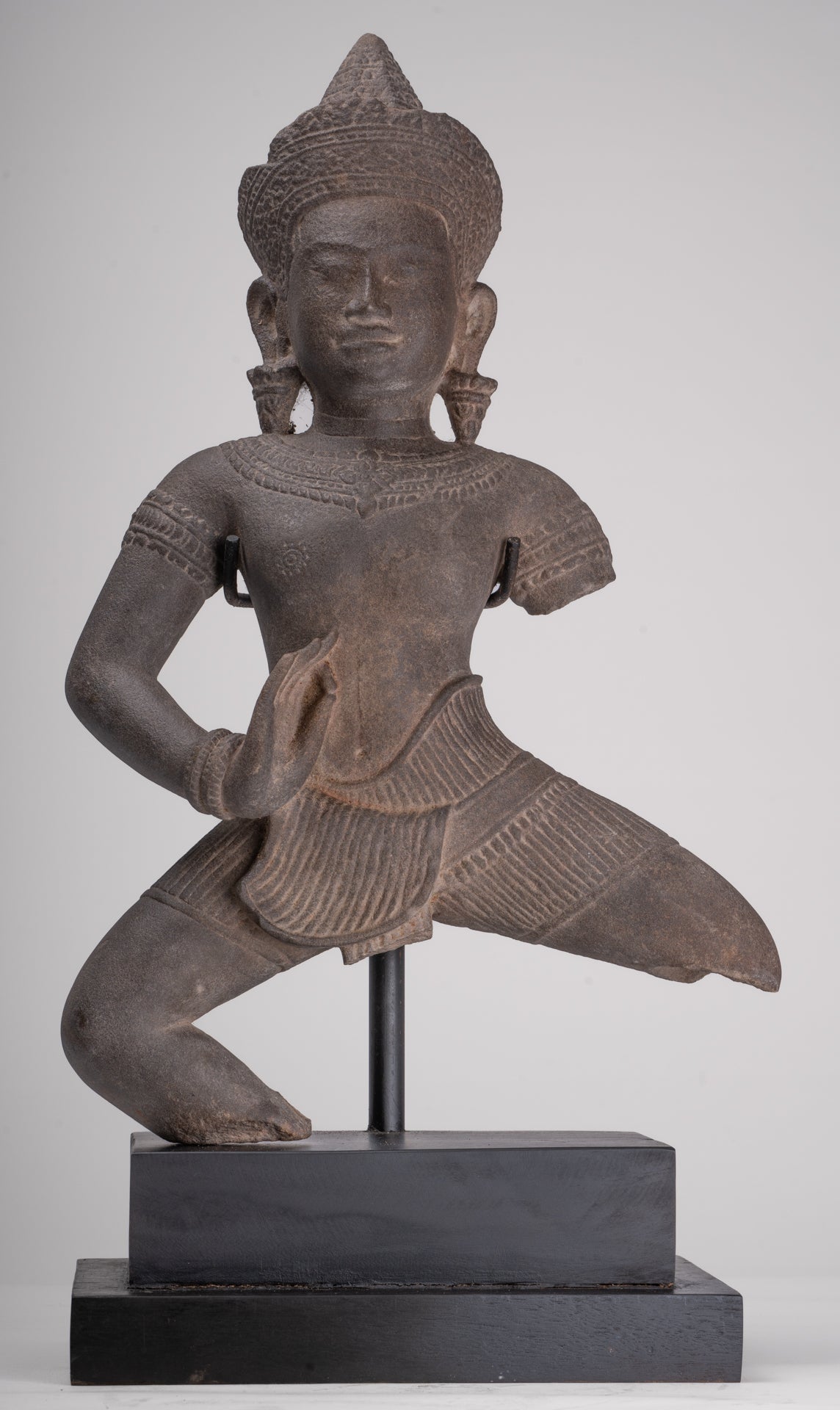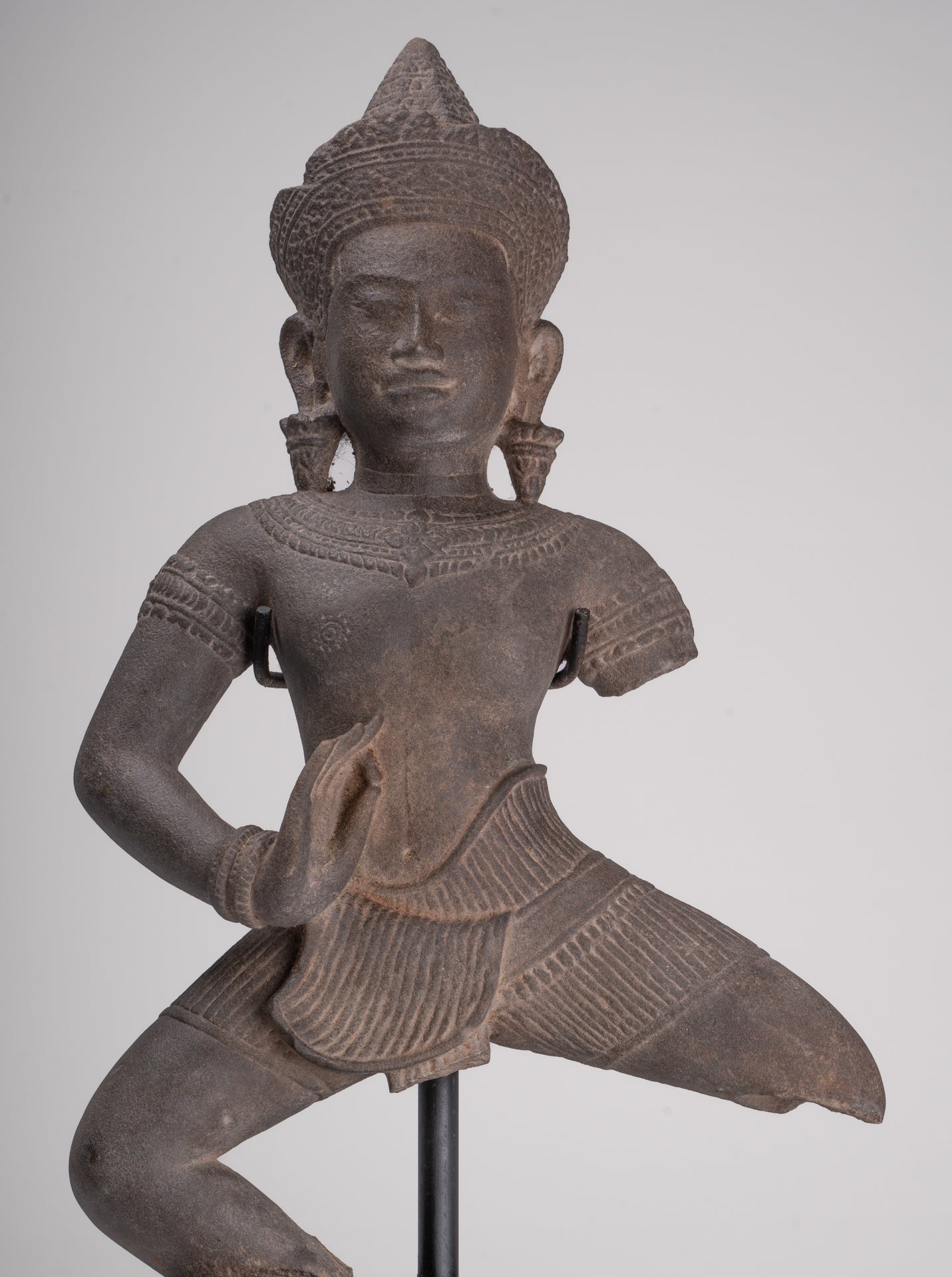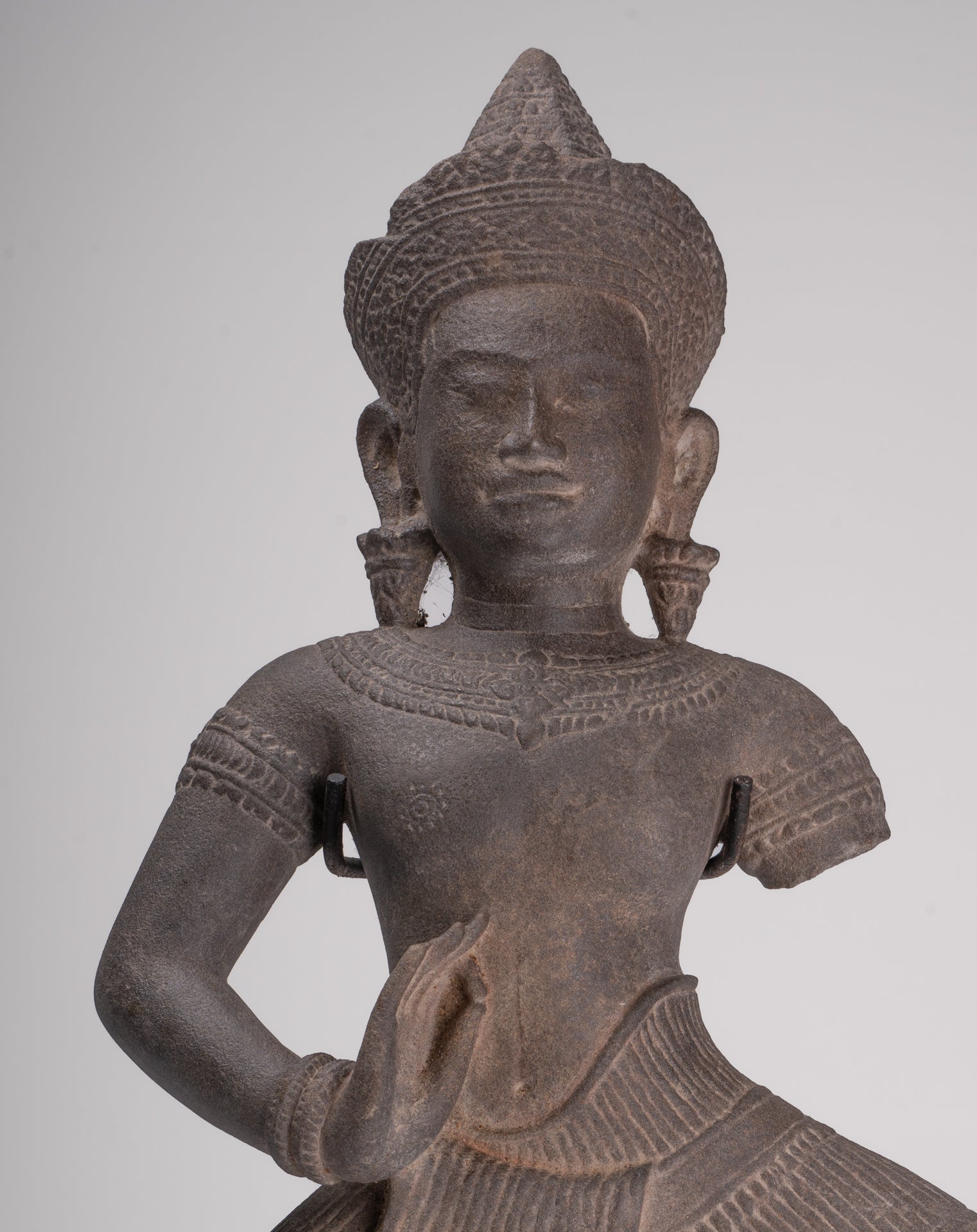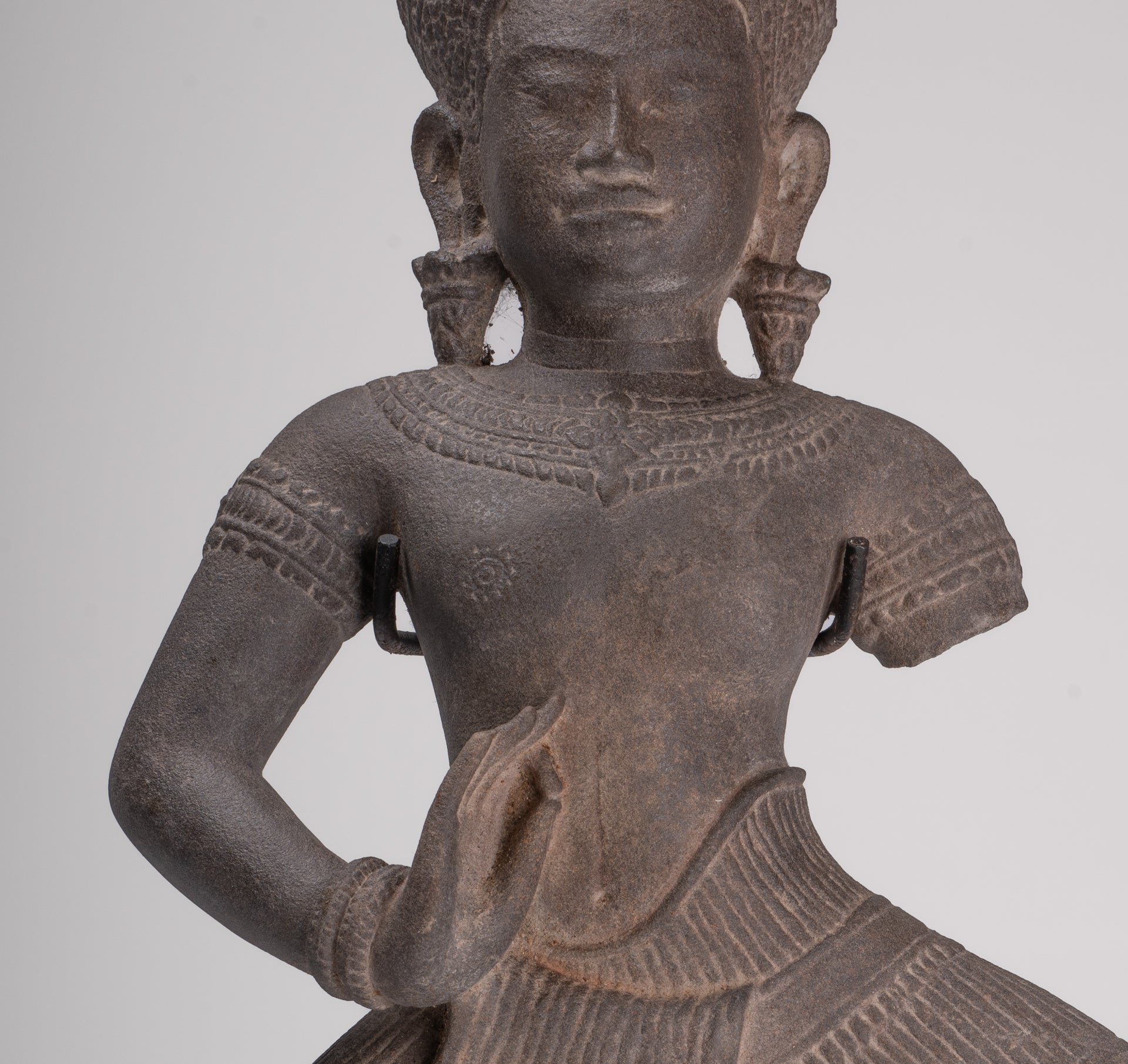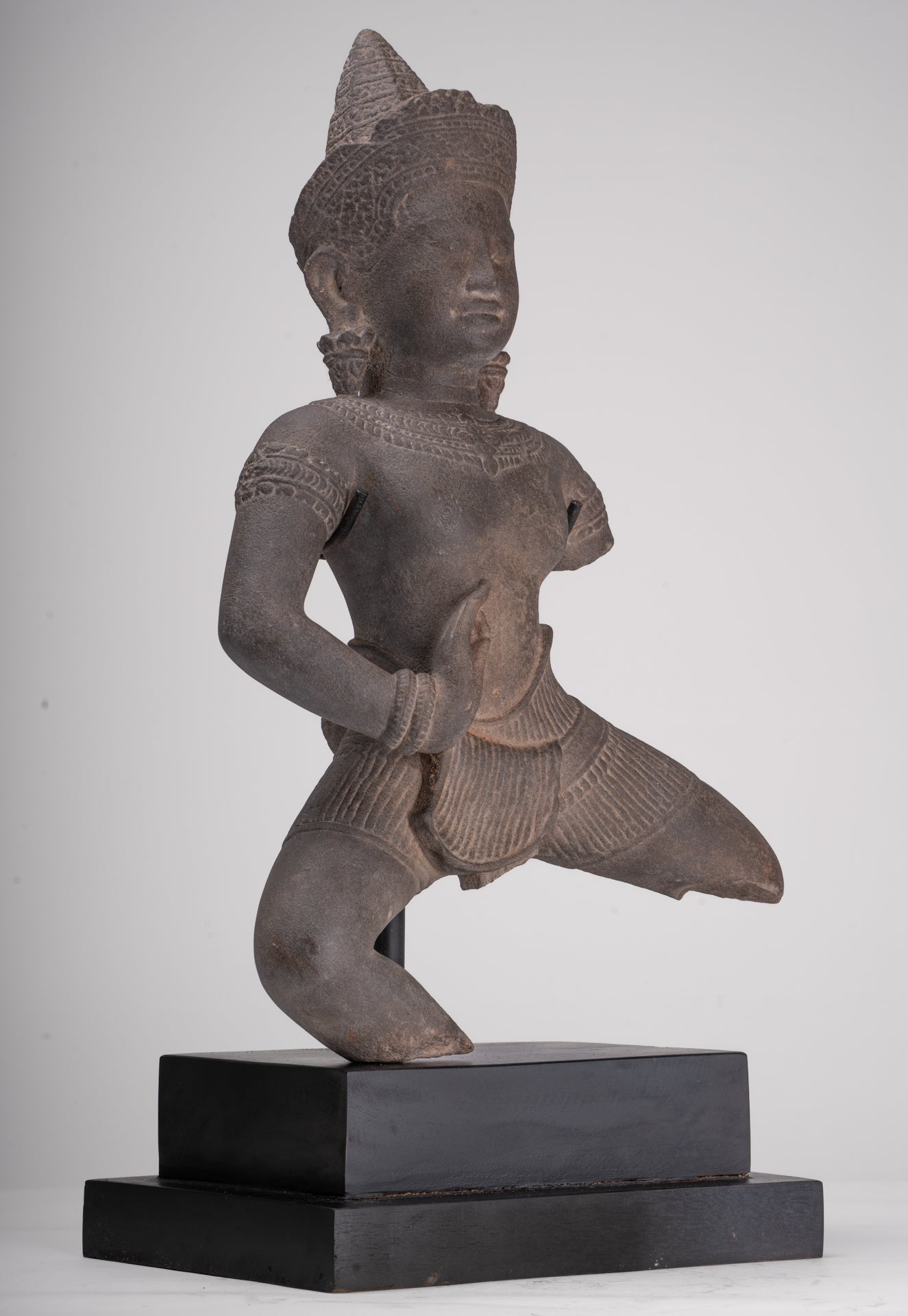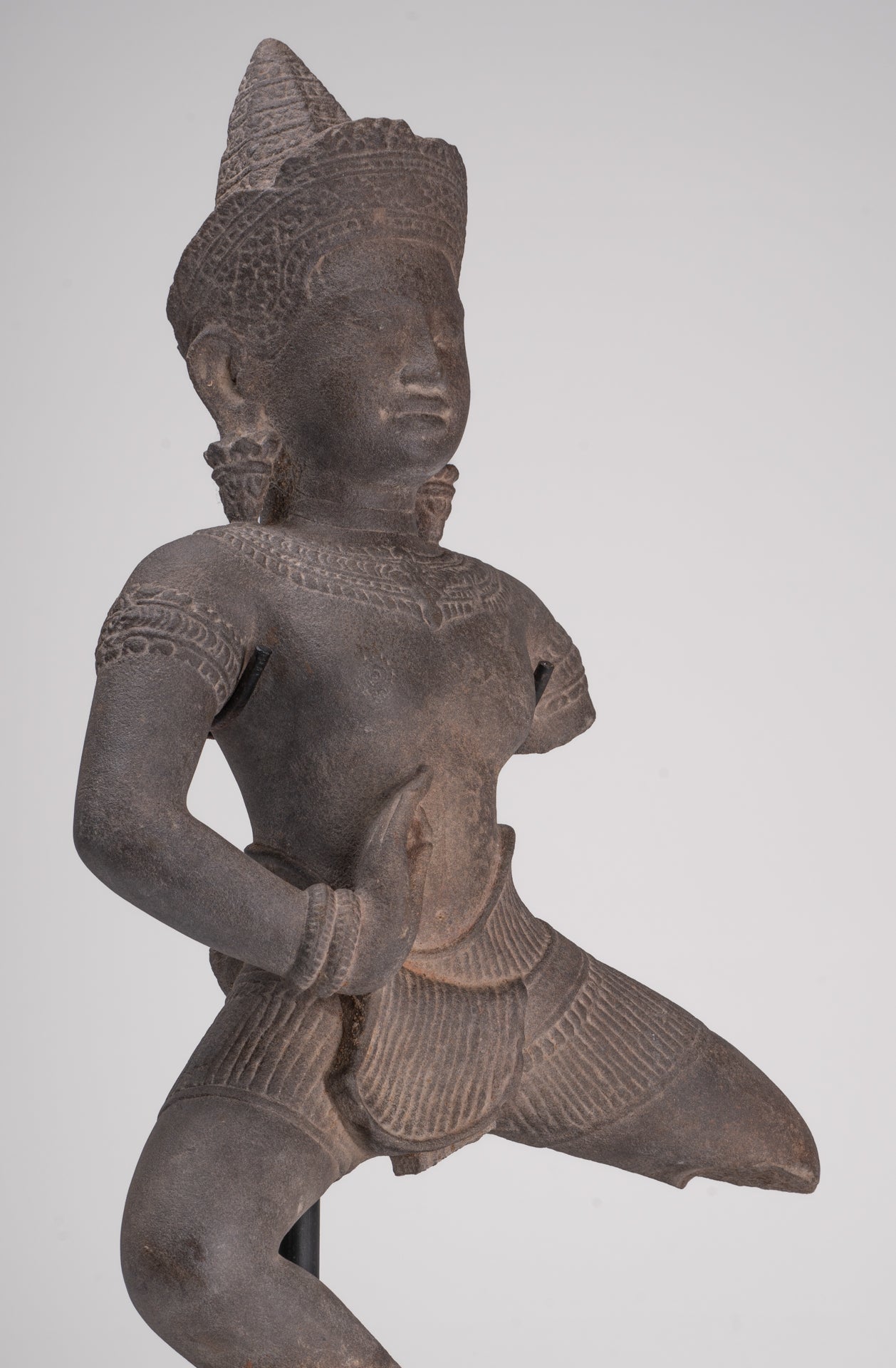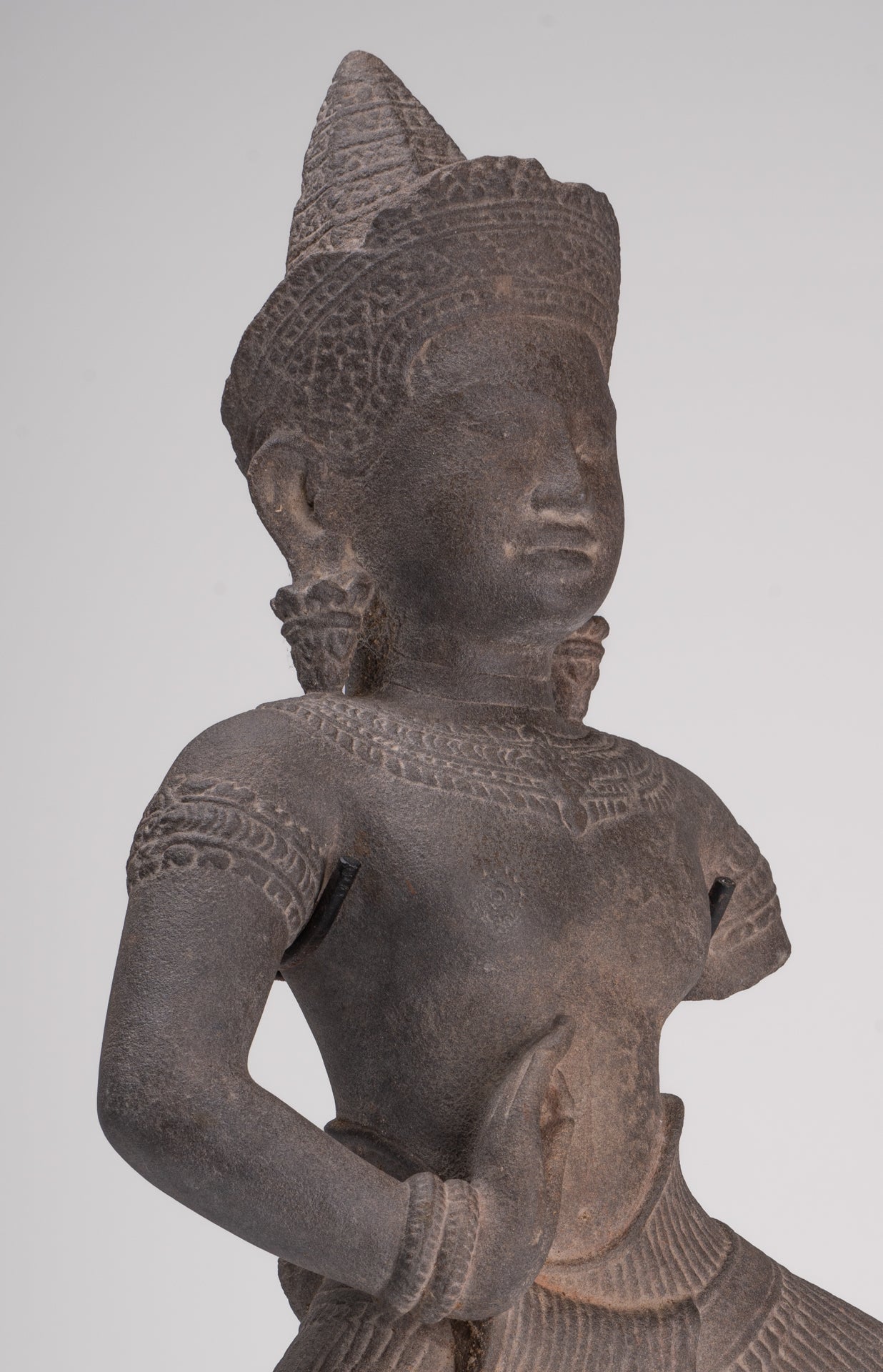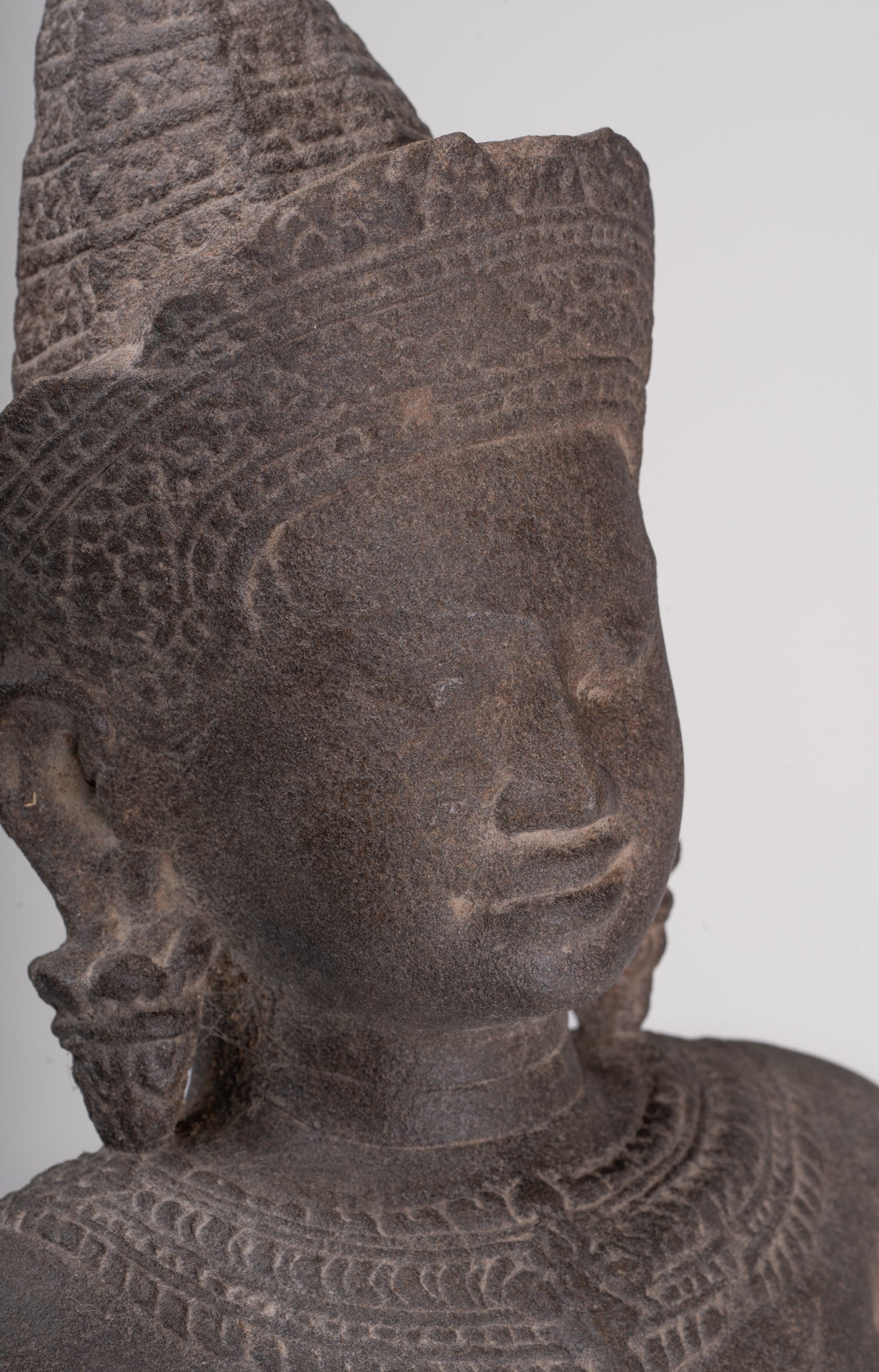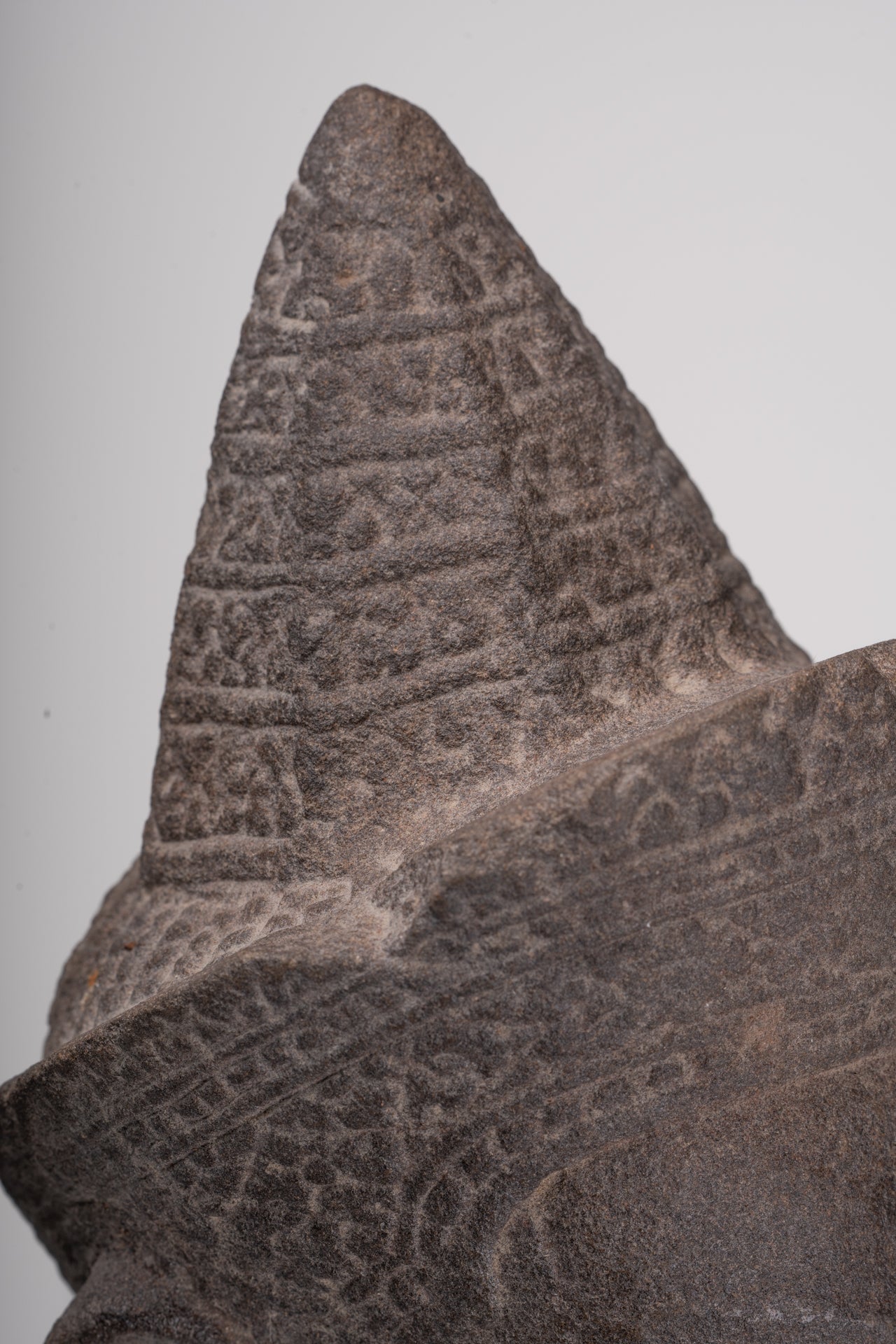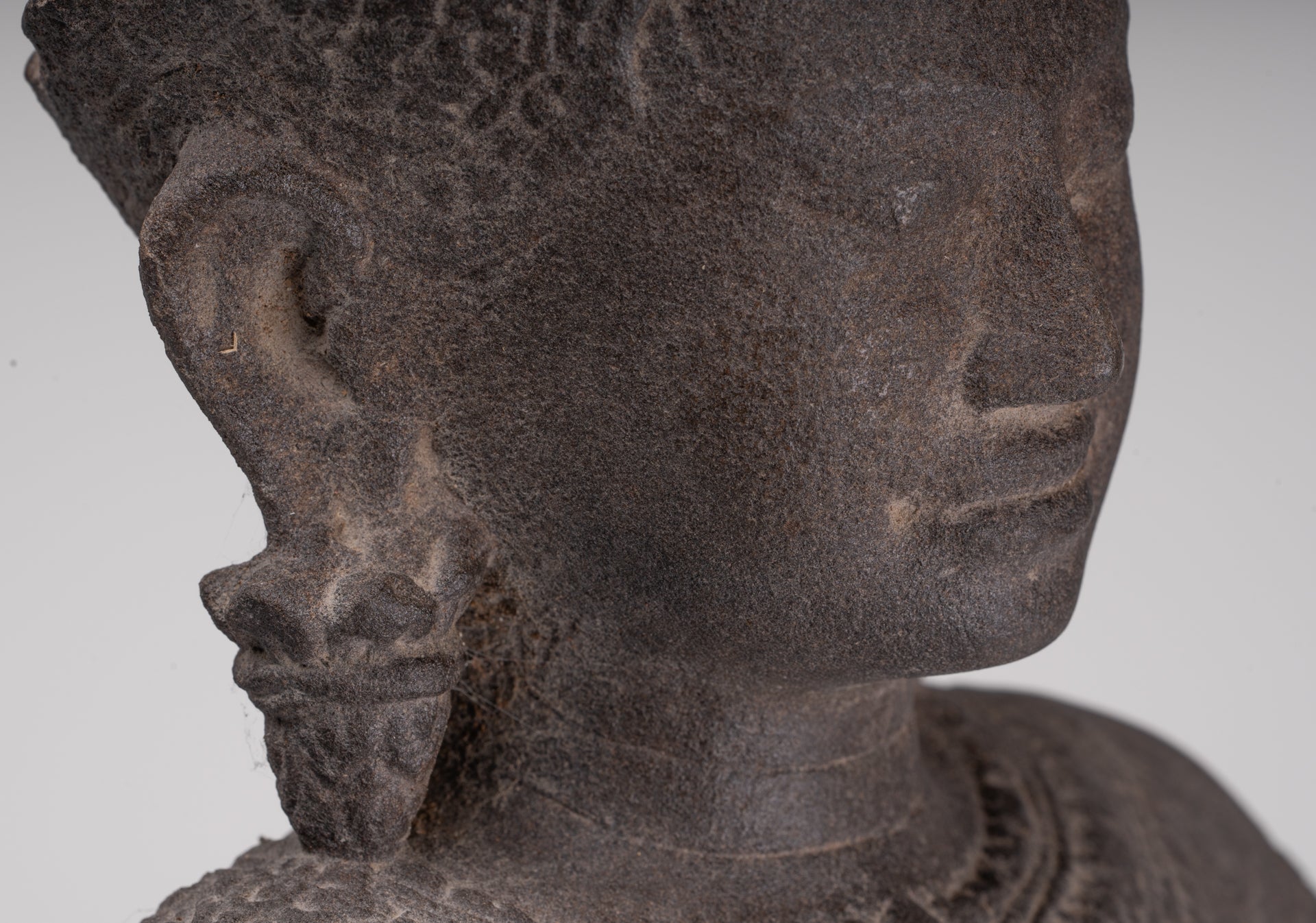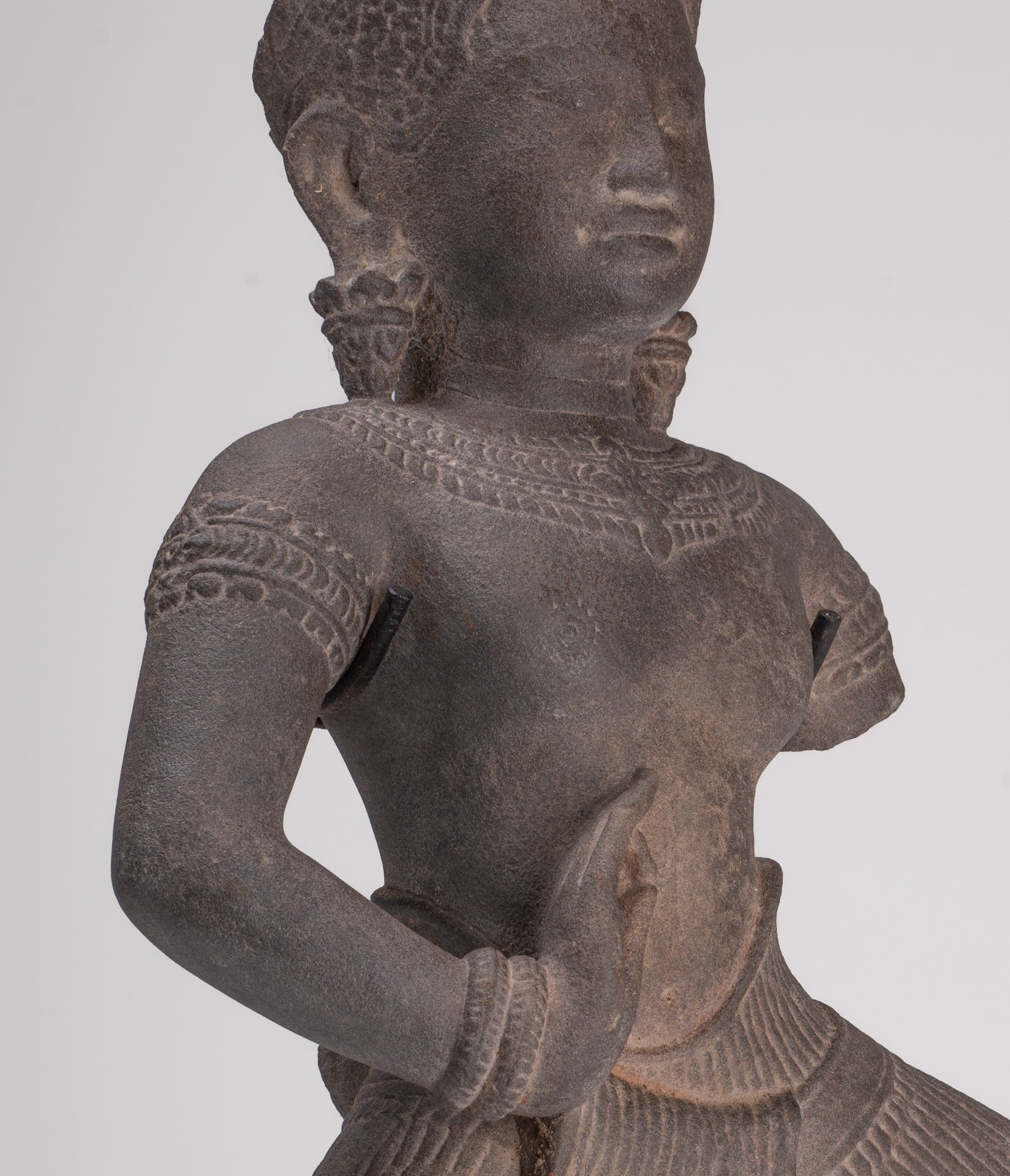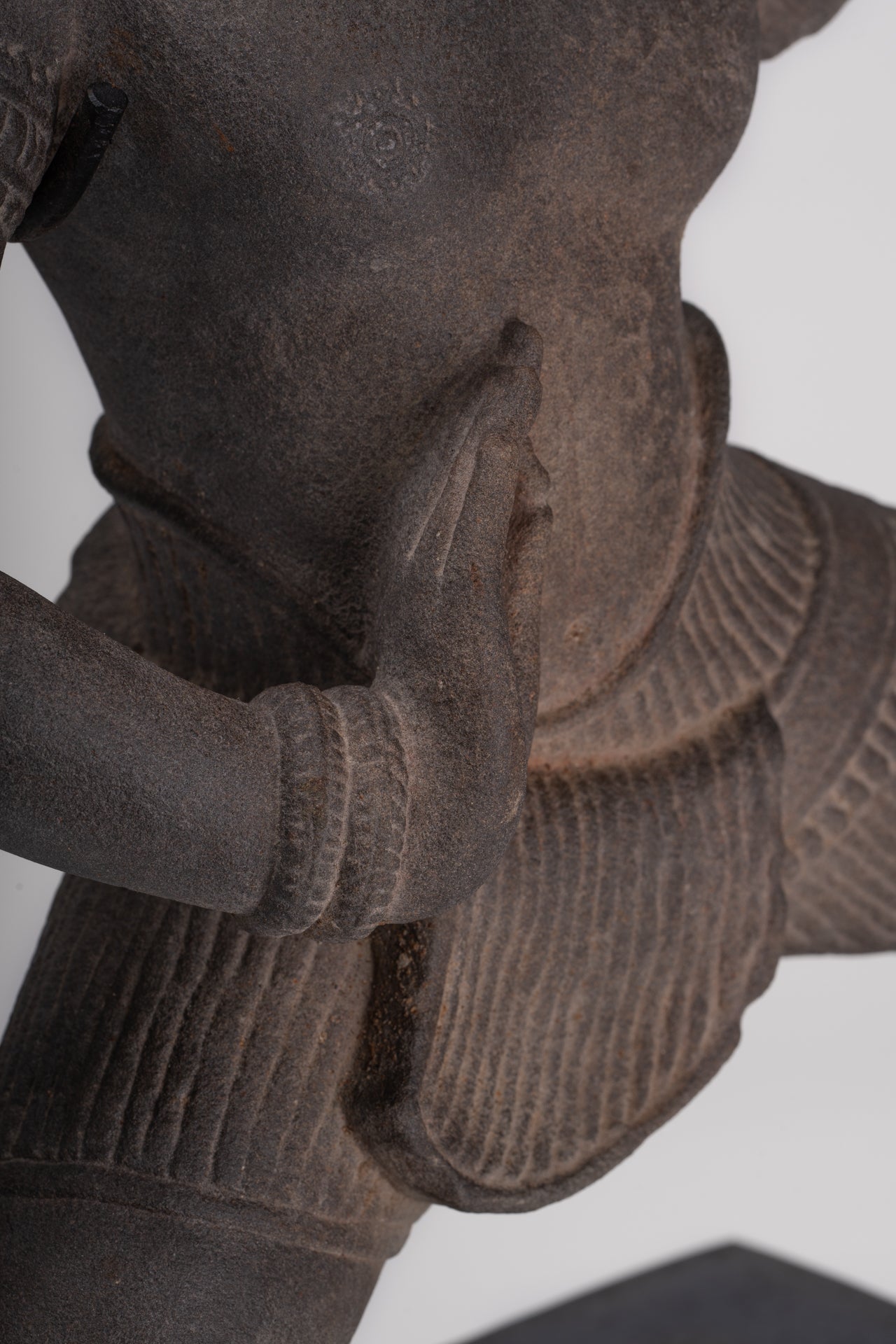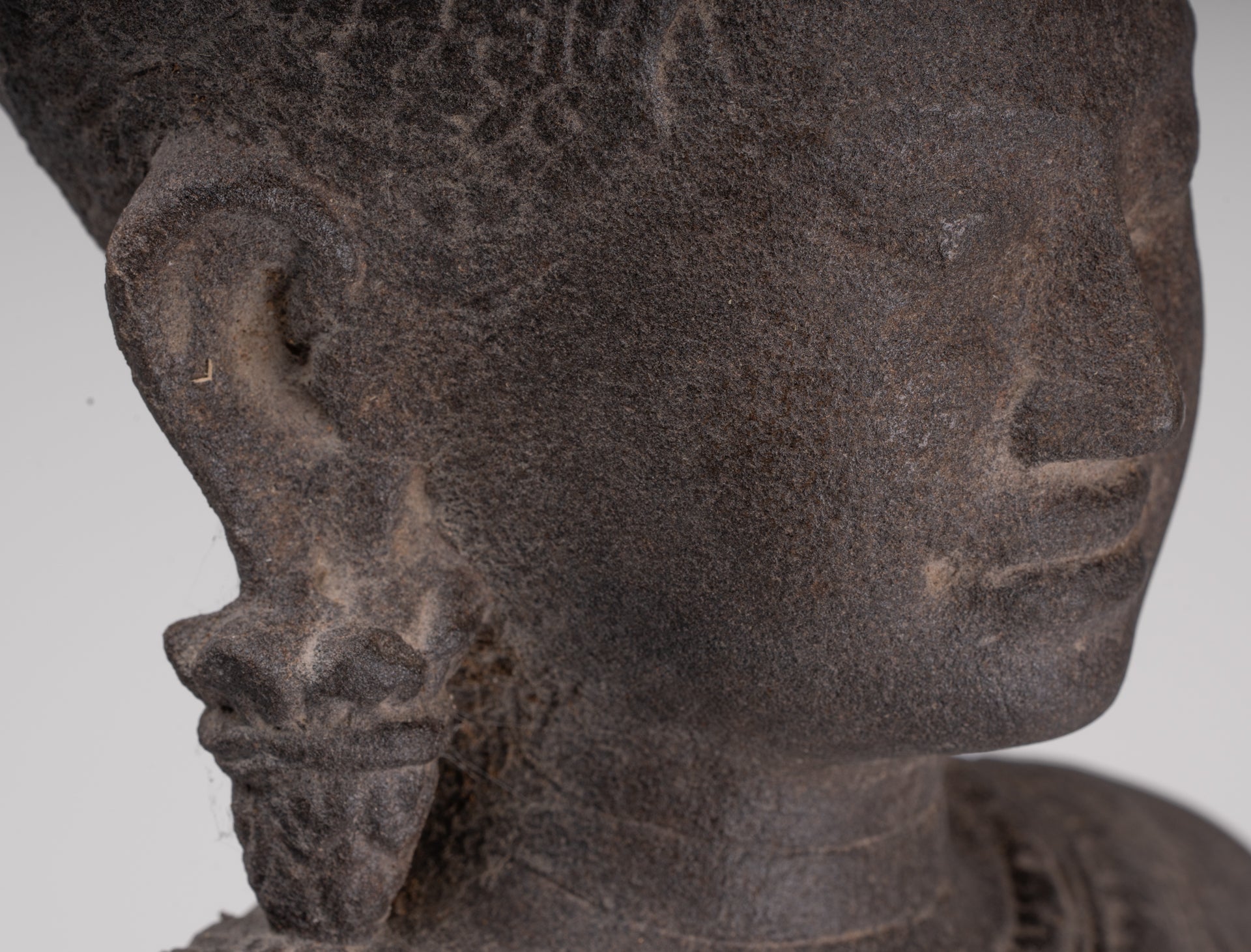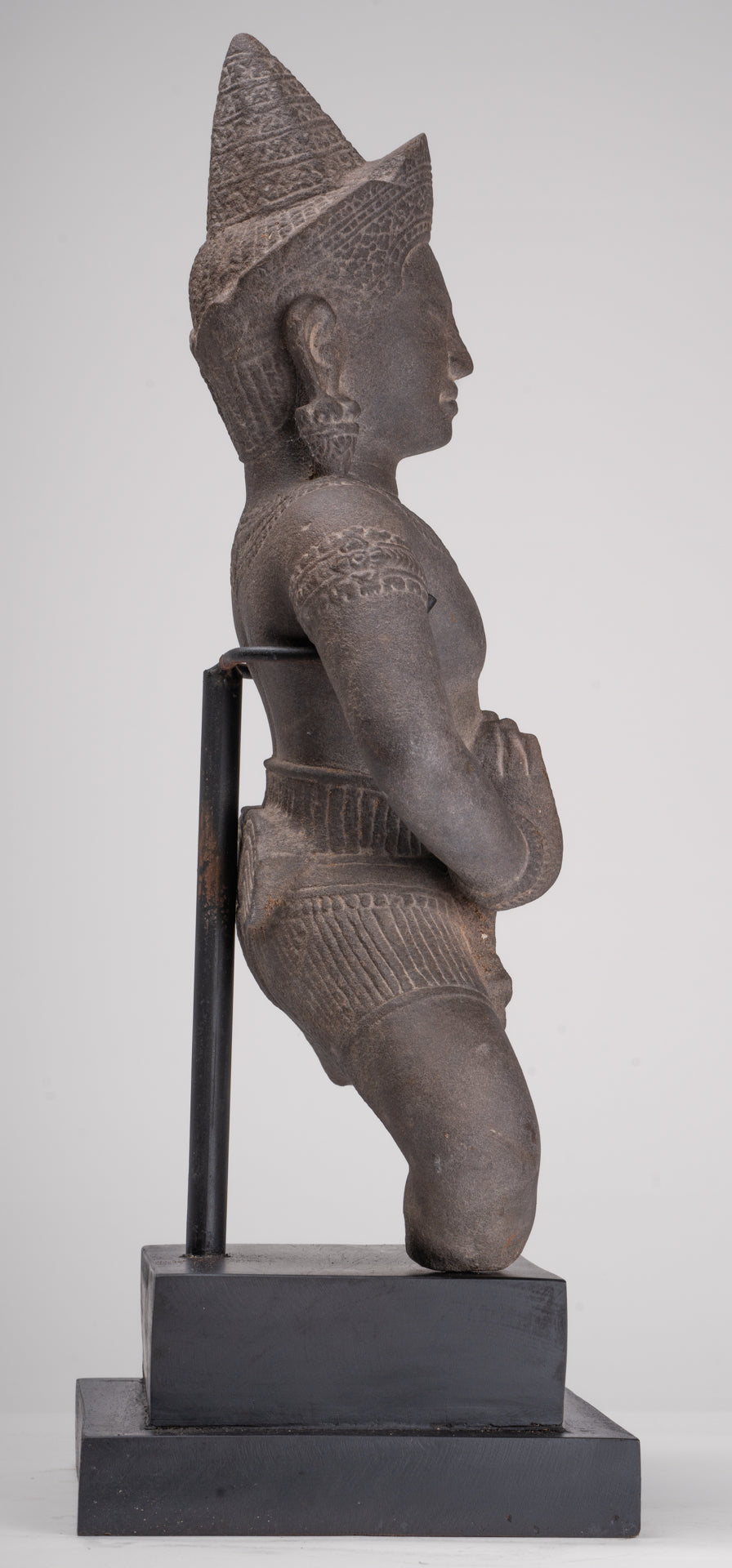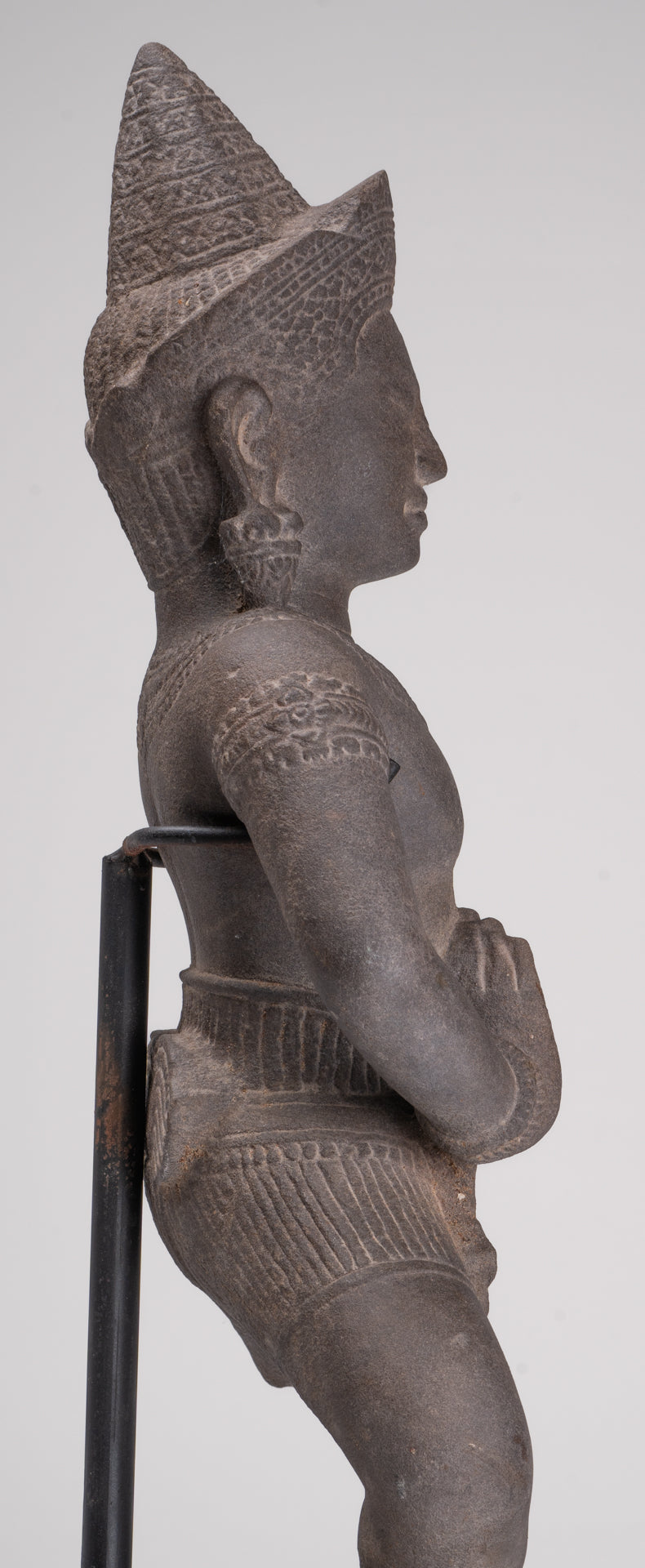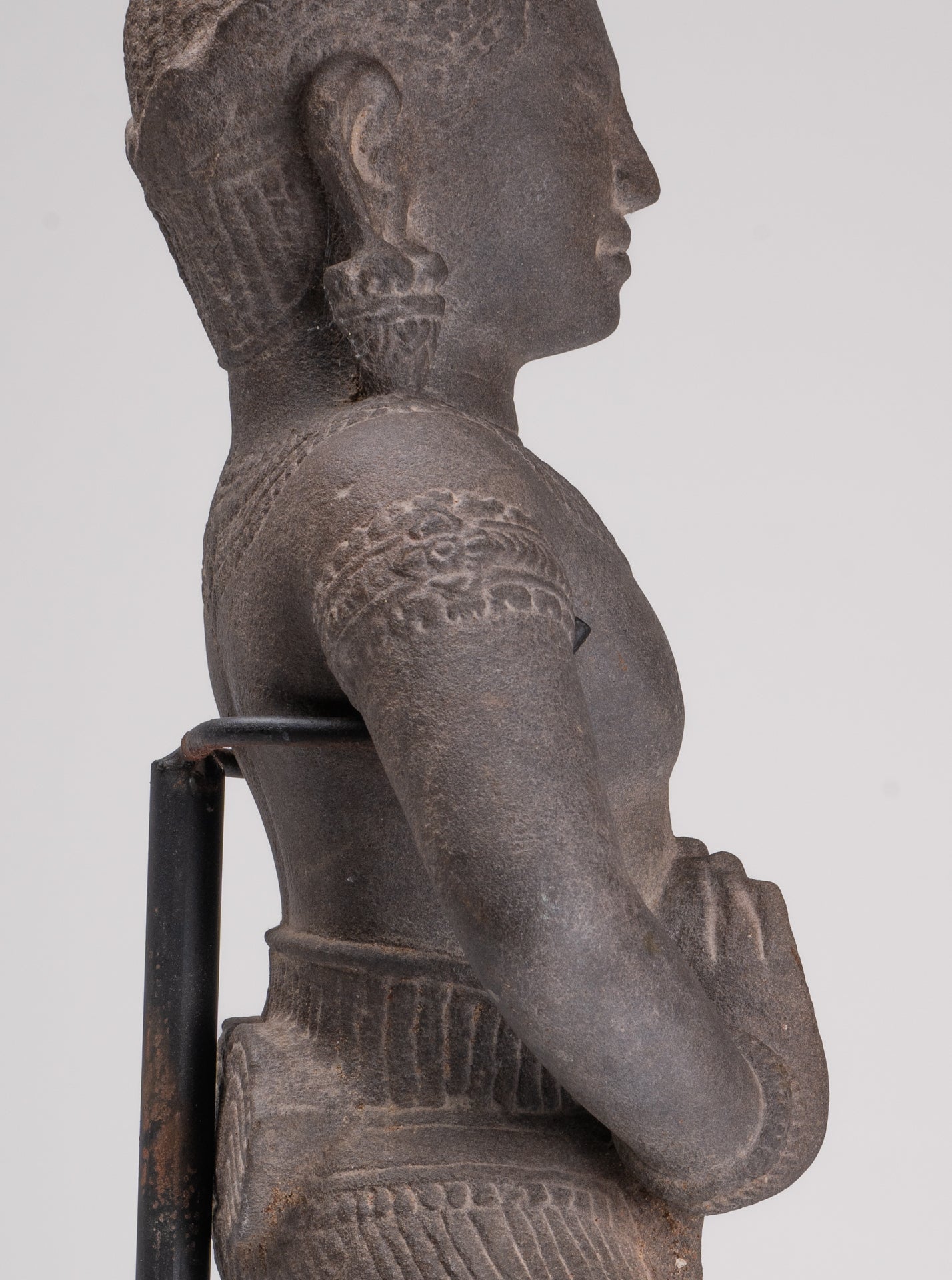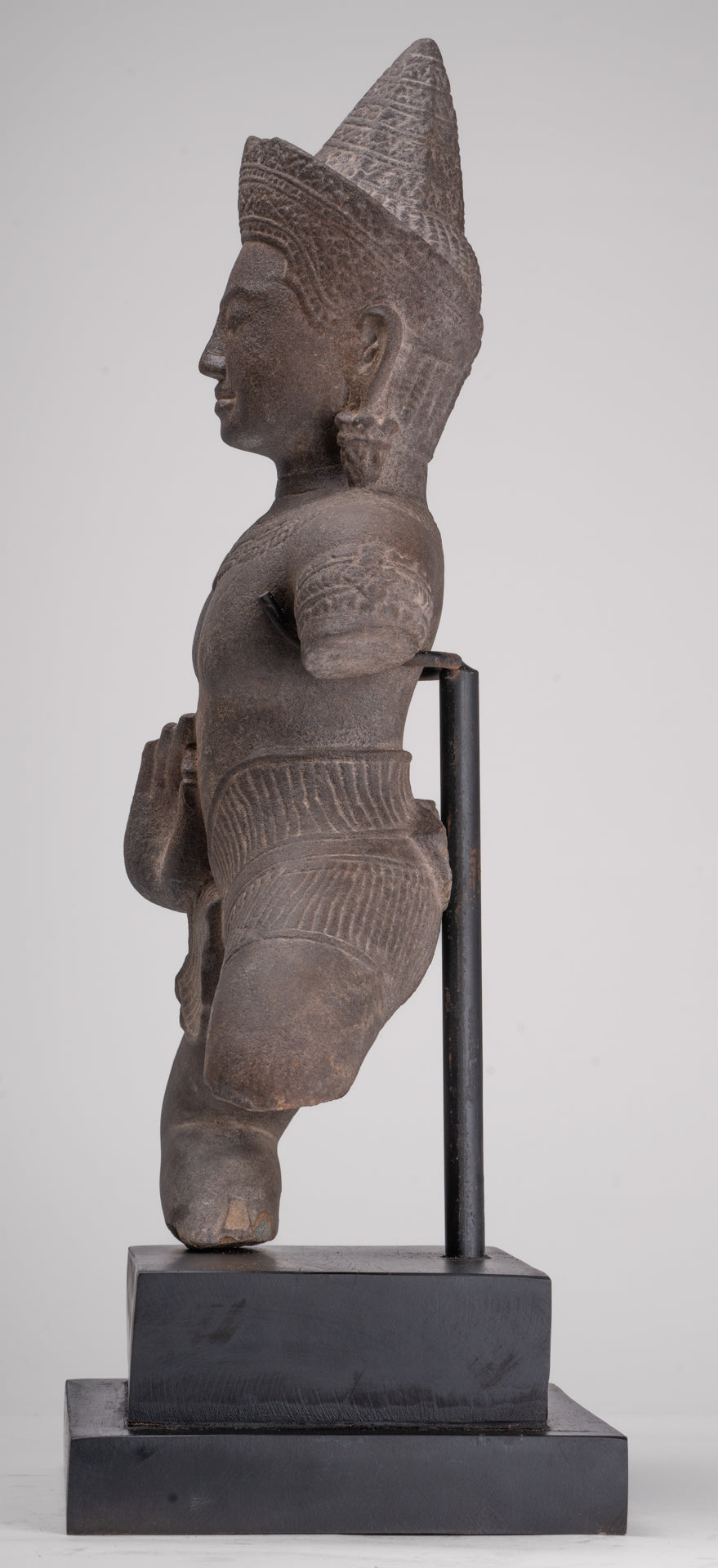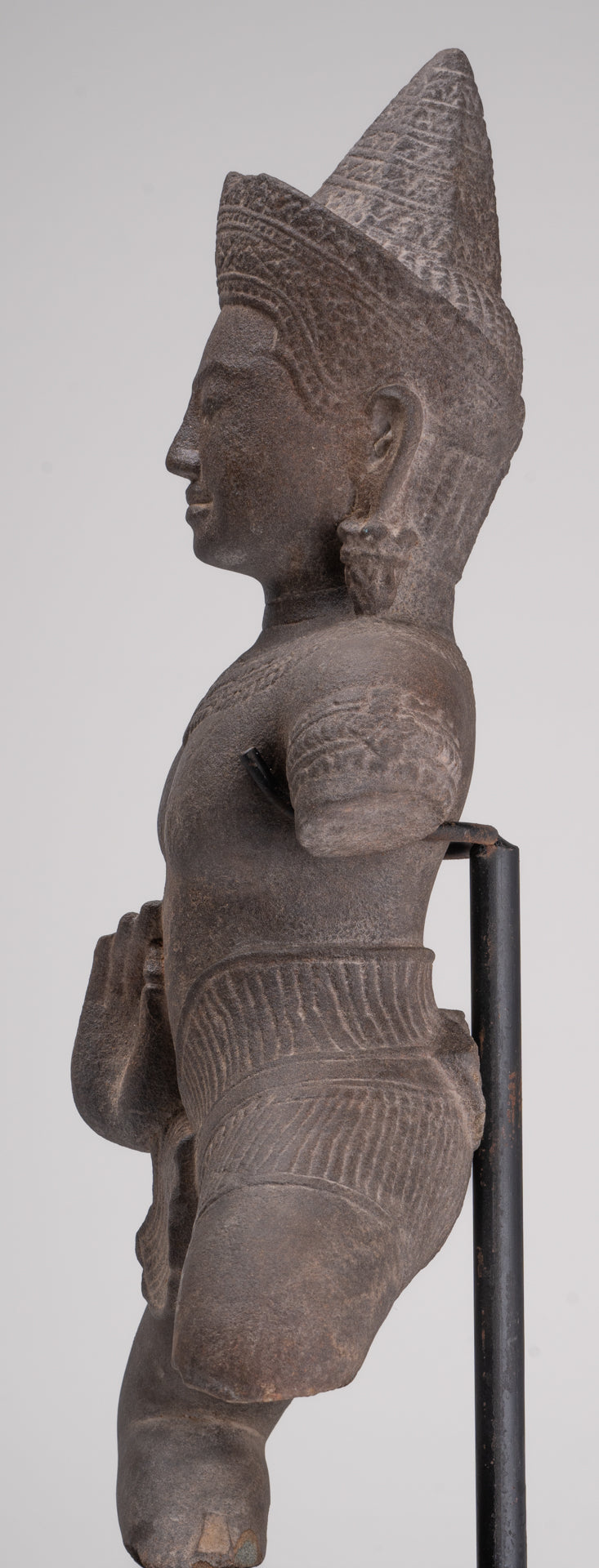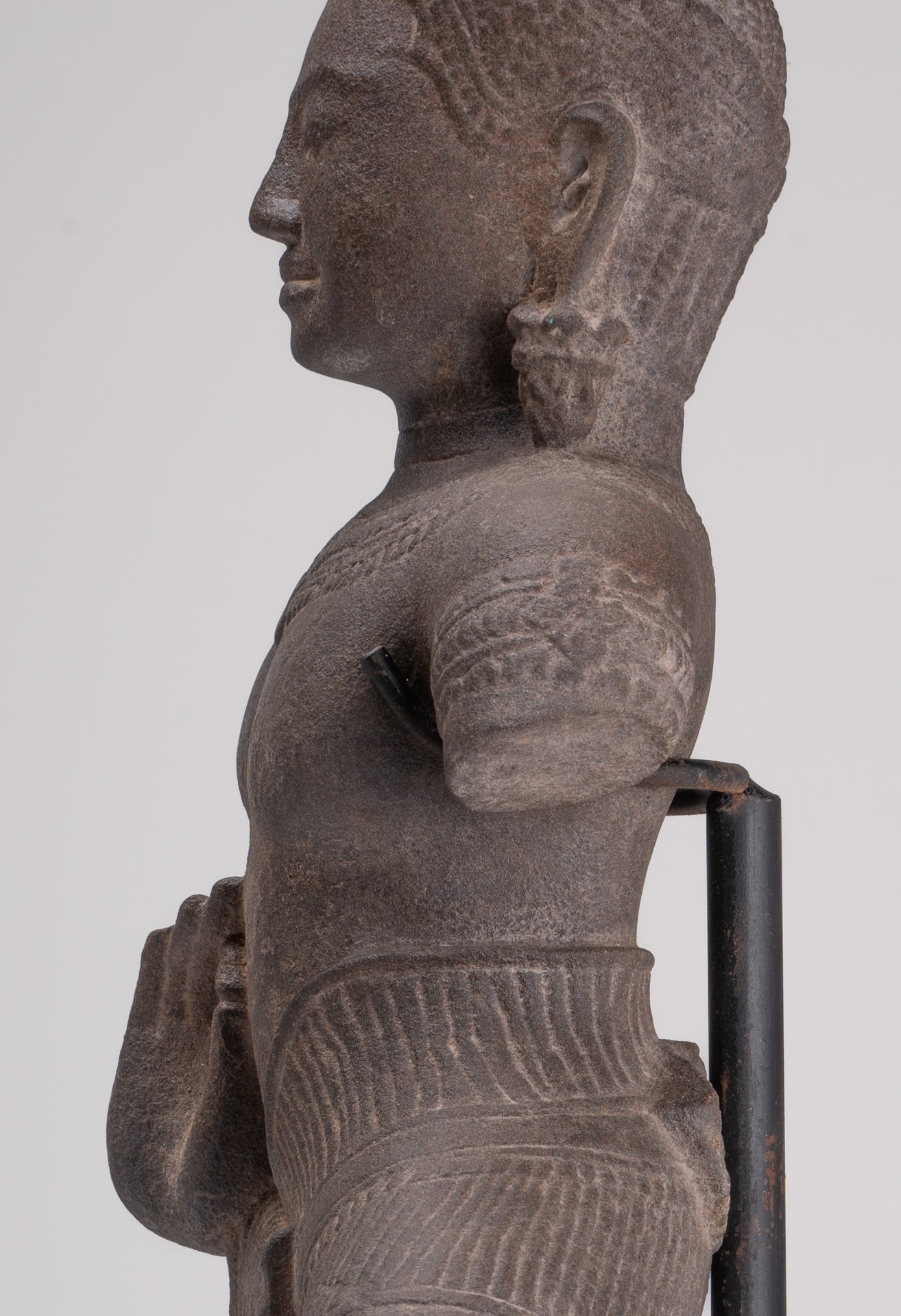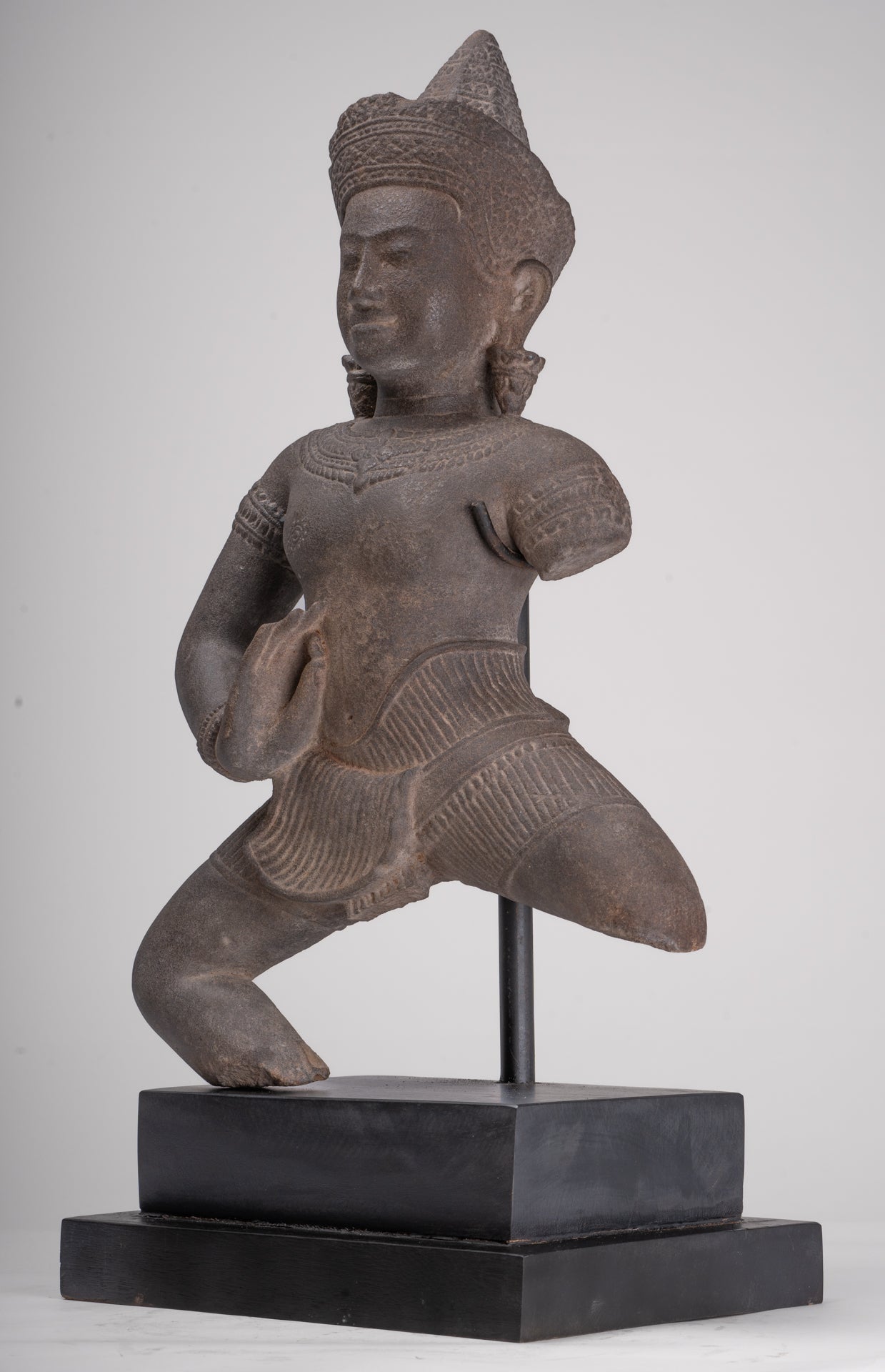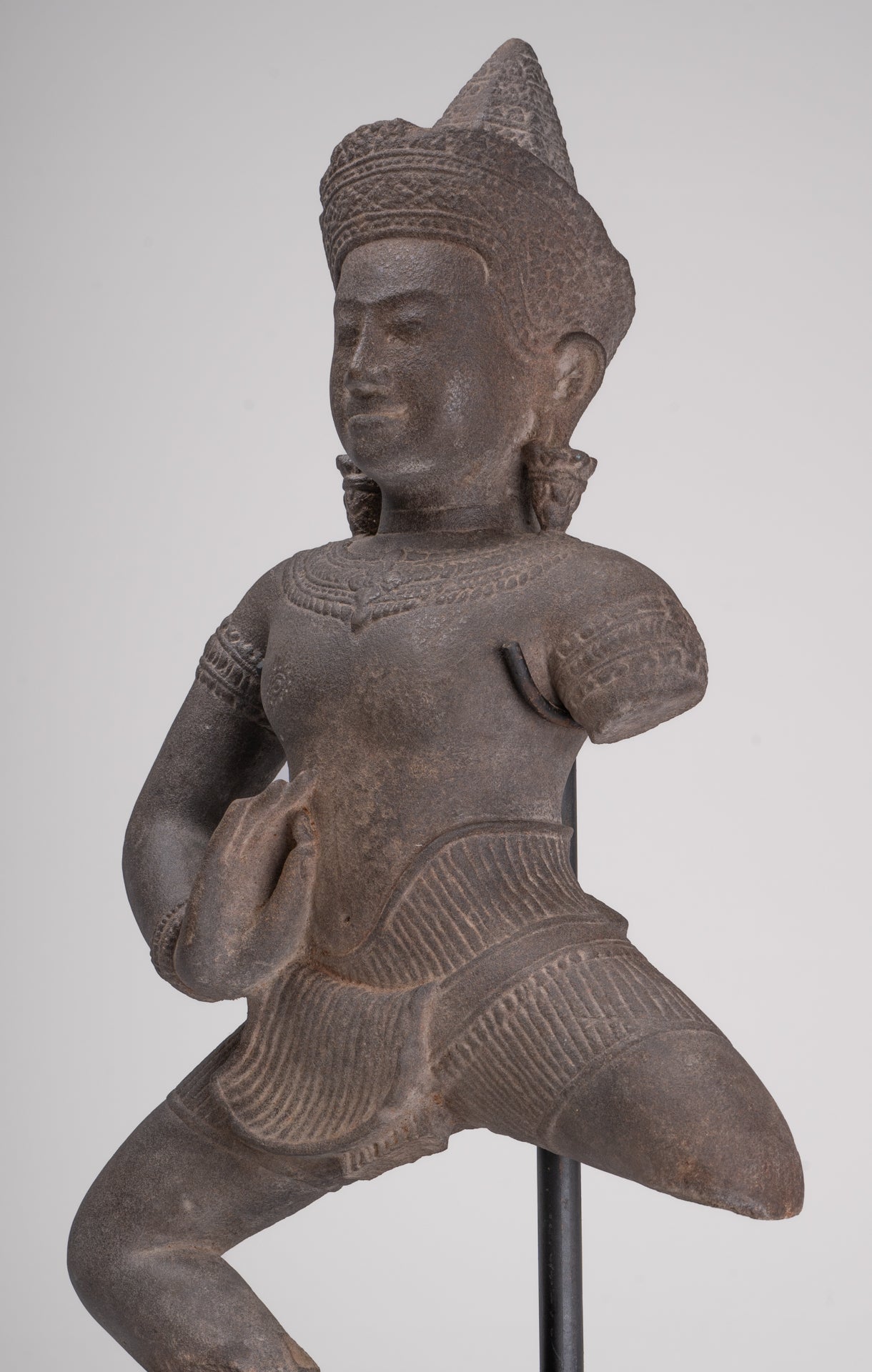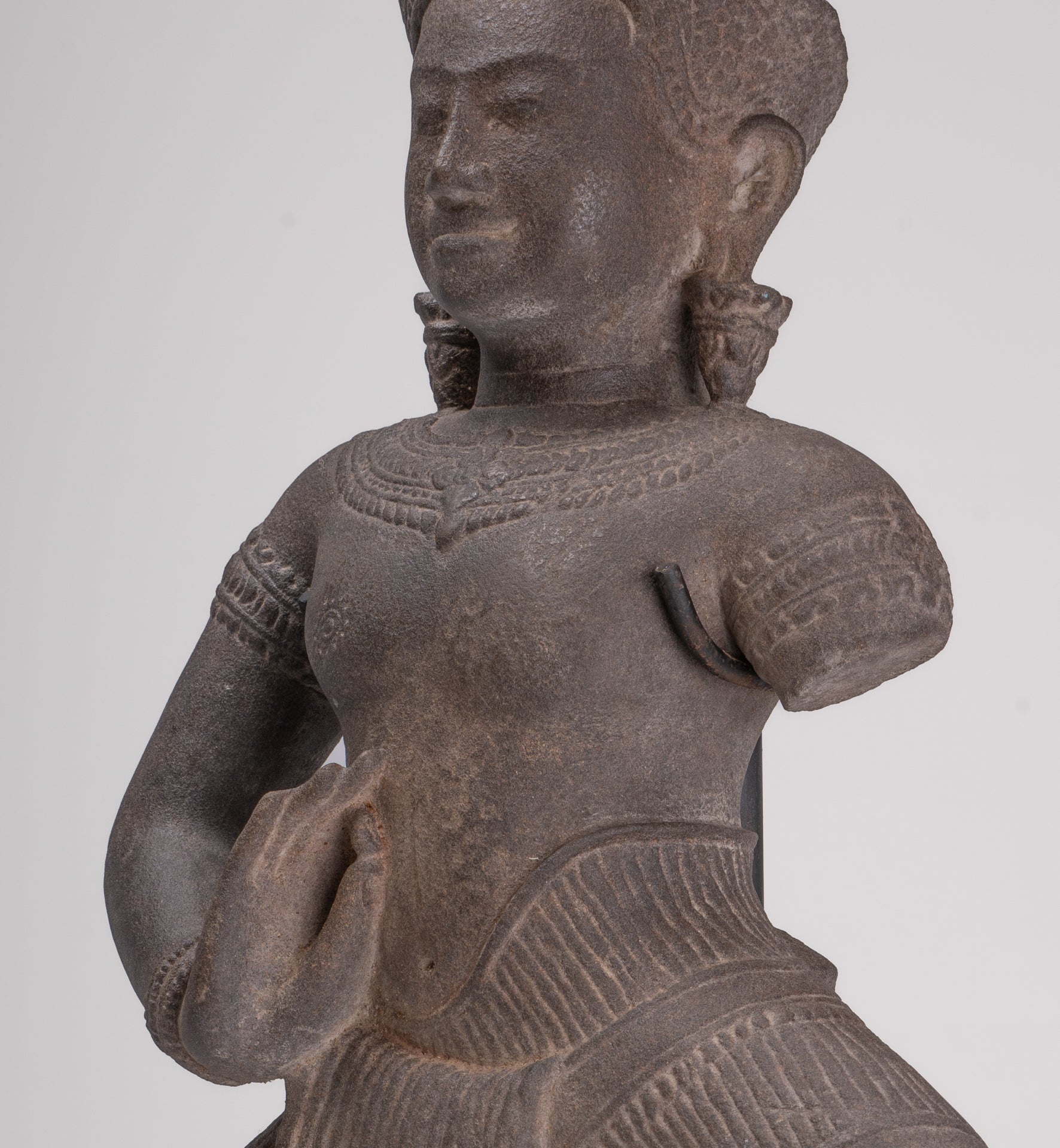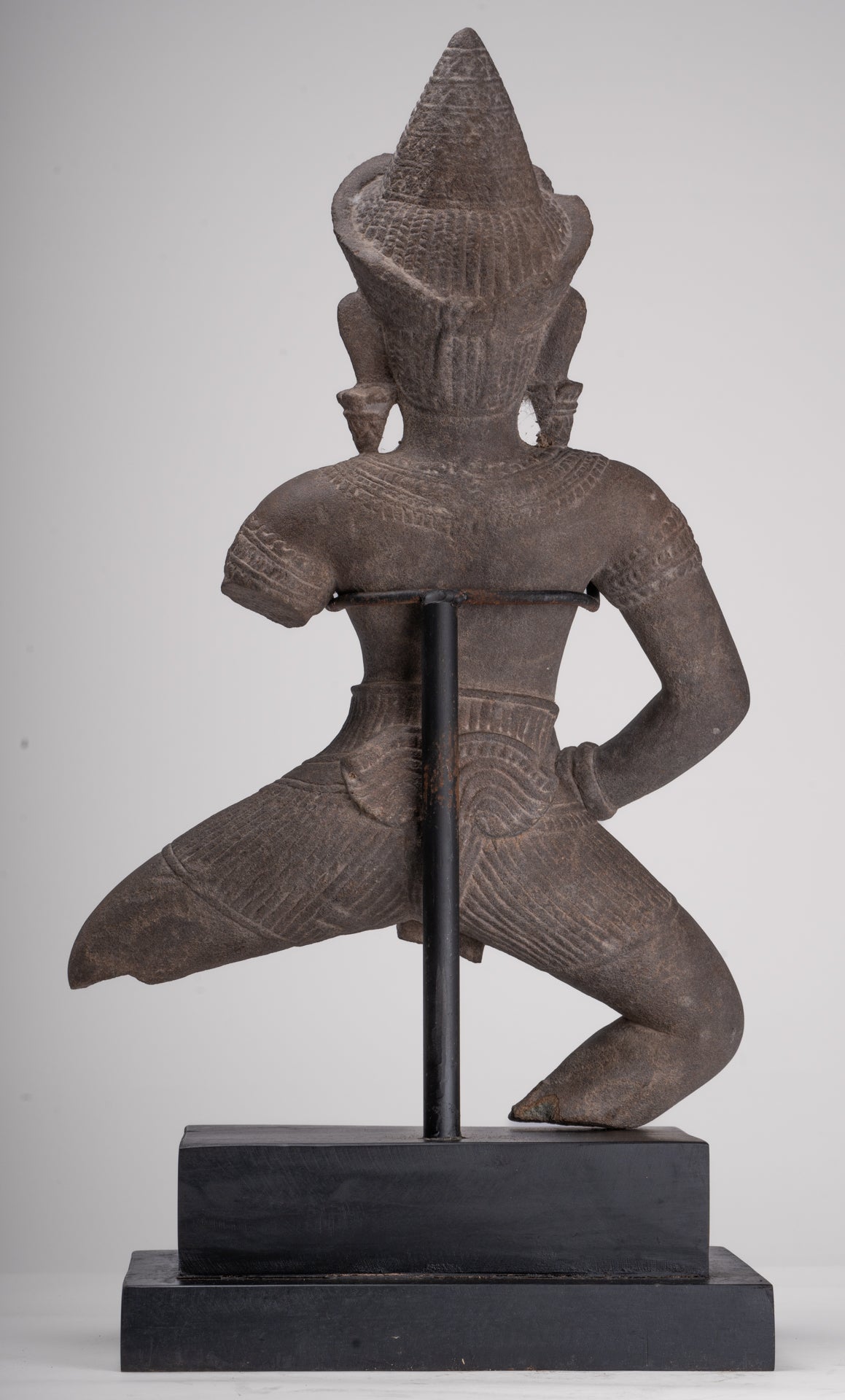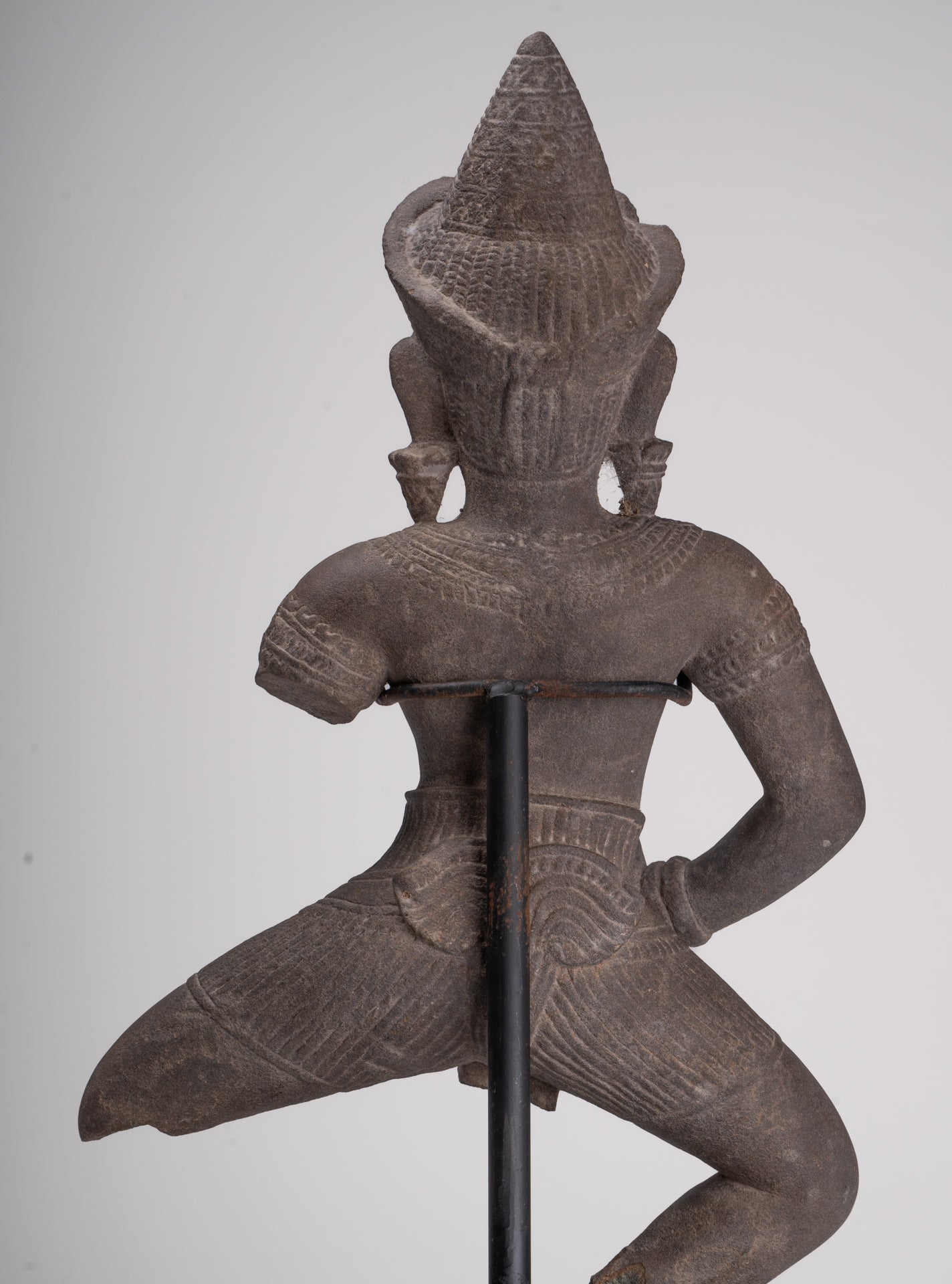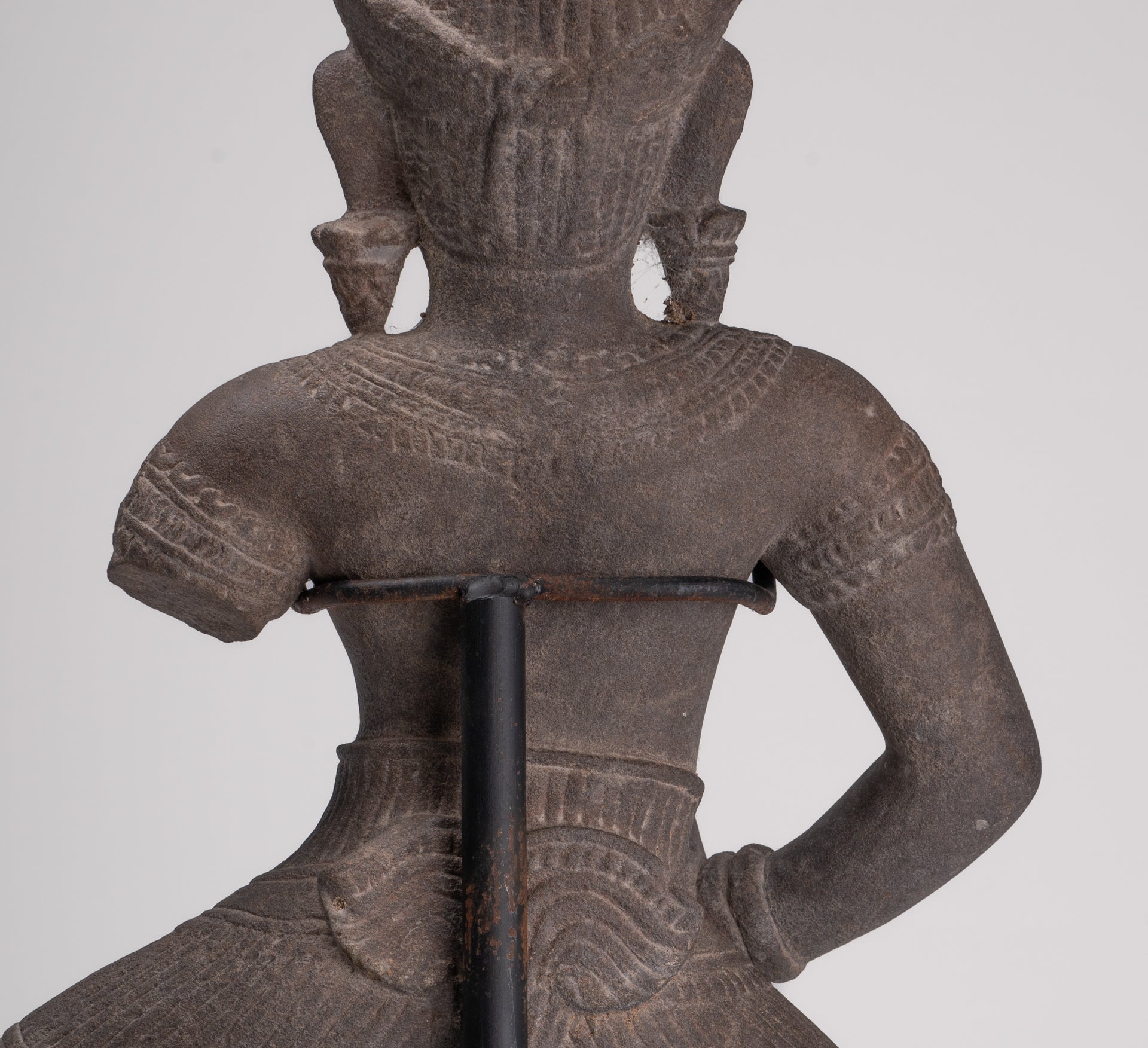-
Apsara Statue - Antique Khmer Style Stone Angkor Apsara or Angel Statue - 58cm/23"
Measurements Height 58cm/23"
An antique Khmer style sandstone standing Apsara or Heavenly angel in 12th century Angkor style.
The Apsara is a female spirit of the clouds and waters in Hindu and Buddhist mythology a celestial nymph or celestial maiden.
The stone apsaras of Angkor Wat are among the most iconic and celebrated features of this architectural masterpiece. These celestial dancers, intricately carved into the sandstone walls of the temple, serve as a testament to the artistic and spiritual achievements of the Khmer Empire.
Revered for their elegance, grace, and spiritual symbolism, the apsaras reflect a rich blend of mythology, artistry, and cultural identity that continues to captivate visitors from around the world.
As celestial dancers, guardians, and symbols of feminine grace, Apsaras hold deep cultural and religious significance in Hindu and Buddhist traditions alike.
Apsaras are beautiful, supernatural female beings. They are youthful and elegant, and superb in the art of dancing. They are often the wives of the Gandharvas, the court musicians of Indra. They dance to the music made by the Gandharvas, usually in the palaces of the gods, entertain and sometimes seduce gods and men.
As caretakers of fallen heroes, they may be compared to the valkyries of Norse mythology. As etherial beings who inhabit the skies, and are often depicted taking flight, or at service of a god, they may be compared to Angels.
Apsaras are said to be able to change their shape at will, and rule over the fortunes of gaming and gambling. They are also associated with fertility rites.
With the spread of Hinduism and later Buddhism into Southeast Asia, the image of the Apsara was adopted into Cambodian culture, where it evolved into a unique artistic and cultural symbol. In Cambodian tradition, Apsaras are not only celestial dancers but also embody the ideals of feminine beauty, elegance, and grace, making them a prominent feature in Angkorian and post-Angkorian art.
Angkor Wat, constructed during the reign of King Suryavarman II in the early 12th century, is one of the largest and most intricate religious monuments in the world. Originally dedicated to the Hindu god Vishnu, the temple later became a Buddhist site. The apsaras, numbering over 1,800 throughout the complex, are a central element of the temple’s artistic and spiritual expression.
The artistic details of the Apsaras reflect not only the skill of Khmer sculptors but also the cultural significance placed on these celestial beings. Their ornate attire and graceful poses are symbols of divine beauty, embodying the ideals of femininity and spiritual harmony.
The apsaras of Angkor Wat are distinguished by their intricate detailing and lifelike representation. They are carved in high relief into the sandstone walls, showcasing remarkable craftsmanship and attention to detail. Some key features include:
-
Individuality: Each apsara is unique. Differences in facial expressions, hairstyles, costumes, and poses reflect an extraordinary level of artistic creativity. This individuality adds to their realism and vitality.
-
Hairstyles and Crowns: The apsaras display elaborate hairstyles and crowns, often adorned with floral patterns, jewels, and intricate designs. These styles reflect the fashion and aesthetic ideals of the Khmer court.
-
Costumes: The apsaras are clad in intricately detailed garments, including flowing skirts and ornamental belts. The folds of their garments are rendered with remarkable precision, showcasing the skill of Khmer sculptors.
-
Dance Poses: The apsaras are depicted in graceful, fluid poses, capturing the essence of celestial dance. Their hand gestures, known as mudras, convey various symbolic meanings and enhance their ethereal quality.
The stone apsaras of Angkor Wat are much more than artistic masterpieces; they are enduring symbols of the Khmer Empire’s cultural and spiritual achievements. These celestial dancers, with their intricate details and profound symbolism, continue to captivate and inspire.
As timeless representations of beauty, grace, and spirituality, the apsaras remain an integral part of Cambodia’s heritage and a source of national pride.
To aid with safe shipping your Apsara will be wood crated before shipping. There is no additional cost for this packing, crating and shipping service.
Enlighten your modern interior with this stunning antique style Khmer Apsara from HD Asian Art that with traditional design is sure to add an exotic touch to your modern interior. Styled after artistic techniques prevalent in the time of the powerful Khmer Empire of South East Asia.
This traditional in appearance piece is sure to add a unique touch to your home, office or sacred space. One of the most recognisable of the Asian deities this representation of the Apsara is sure to enlighten your home with endlessly timeless style.
-
-
The majority of orders will be shipped with DHL. This is a secure, express and fully tracked service.
Items less than 2Kg we typically ship using Royal Mail.
Once we receive your order we try to ship all orders the same or next working day.
Large and/or fragile pieces requiring palletising, specialist crating and/or extra packaging may take a little longer. Palletised shipments will be delivered curbside.
All orders over 35 GBP will be shipped free of charge.

-
We genuinely hope that all purchases delight.
However, if they do not, regardless of reason, we will refund all orders upon receipt of the unwanted item. Just notify us within 14 days of receiving your order that you wish to make a return and send the piece back to us with 30 days of delivery.
Let Us Help You Find The Piece You Desire
Let Us Help You Find The Piece You Desire
Thank you. Arrived today. THEY ARE ALL EXQUISITE BEYOND BELIEF. The Stele just radiates energy all around, the fresco is unbelievably beautiful and the Buddhas and Brahma stunning. So happy, and feel so blessed. Thank you, and God bless for keeping the Divine alive.
Kush, Windsor, UK
The Buddha statue is marvelous! There are not enough words to describe how deeply the happiness I could feel when looking at the statue. Again, I sincerely appreciate everything. By the way, the parcel was extremely well packaged, I really like the way you arranged things inside the box to keep the statue safe. I look forward to our next transaction in the future.
Chatuphat, Lafayette, IN, USA
I received the Buddha early afternoon on Friday. It is much prettier than I could have ever expected. The pictures do not show the beauty of this piece. It is amazing. You are amazing as well for sending it to me so fast and so well packaged. Thank you so much. I feel so lucky to have this piece and thank you so much for making that happen.
Debra, Houston, TX, USA


